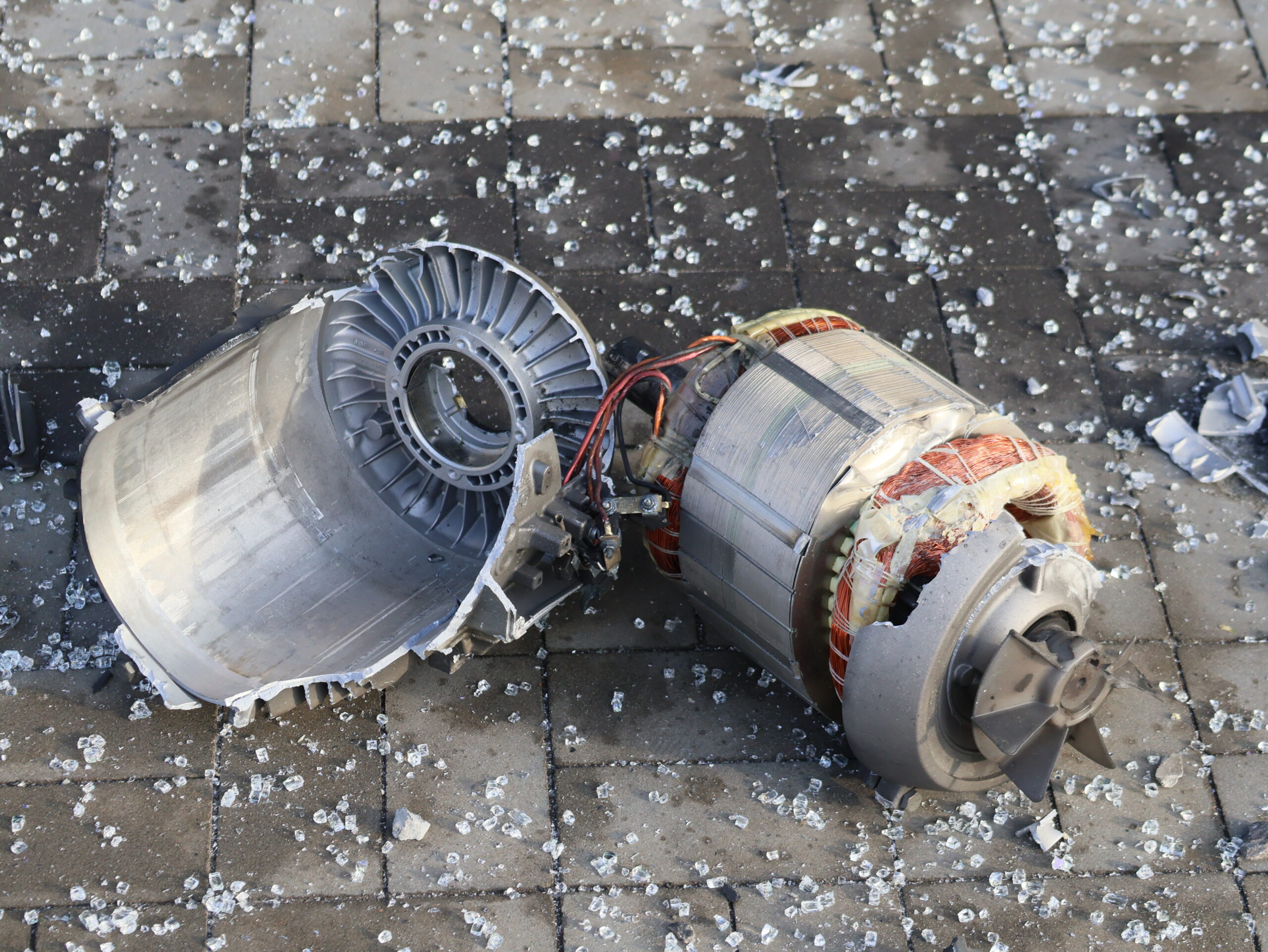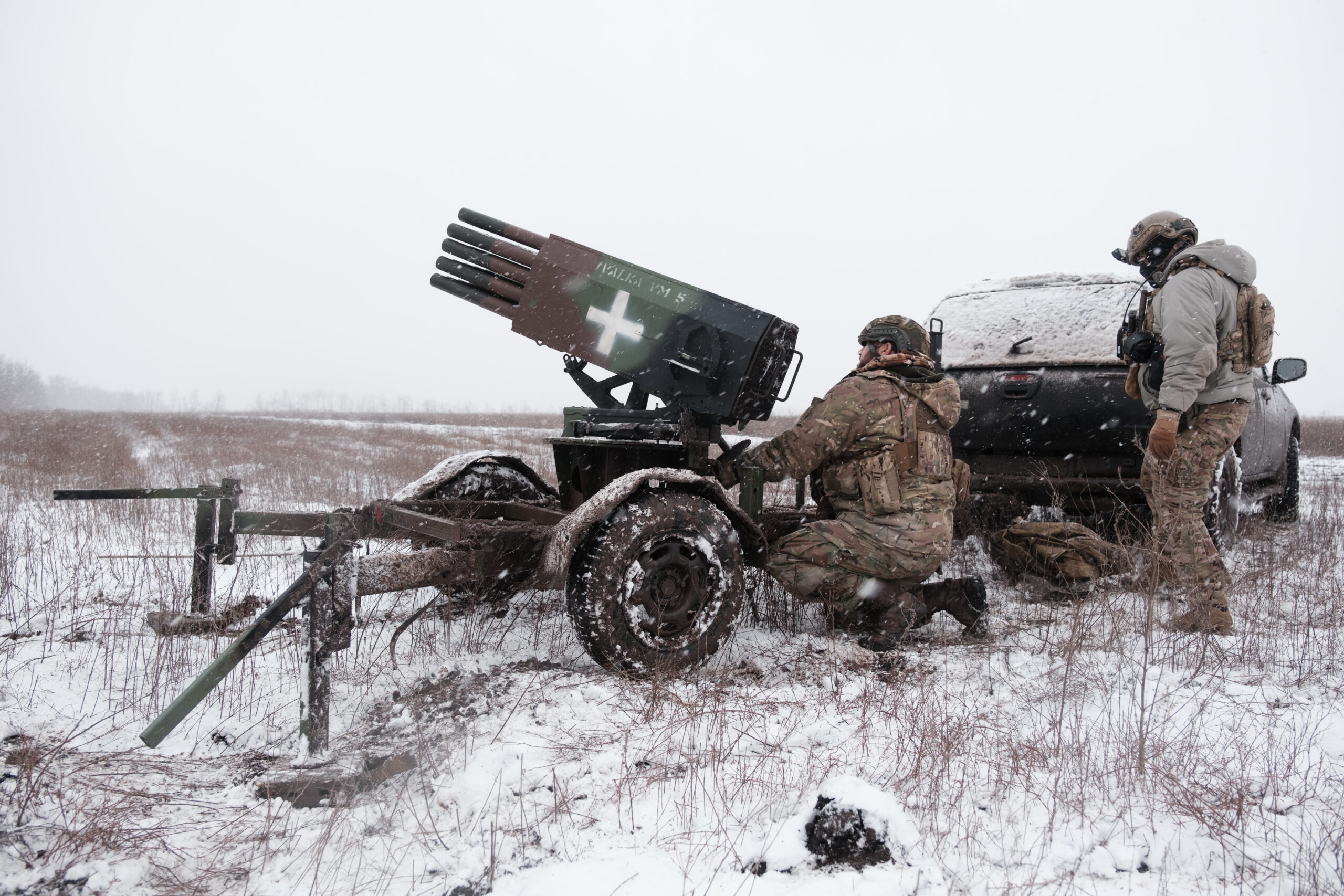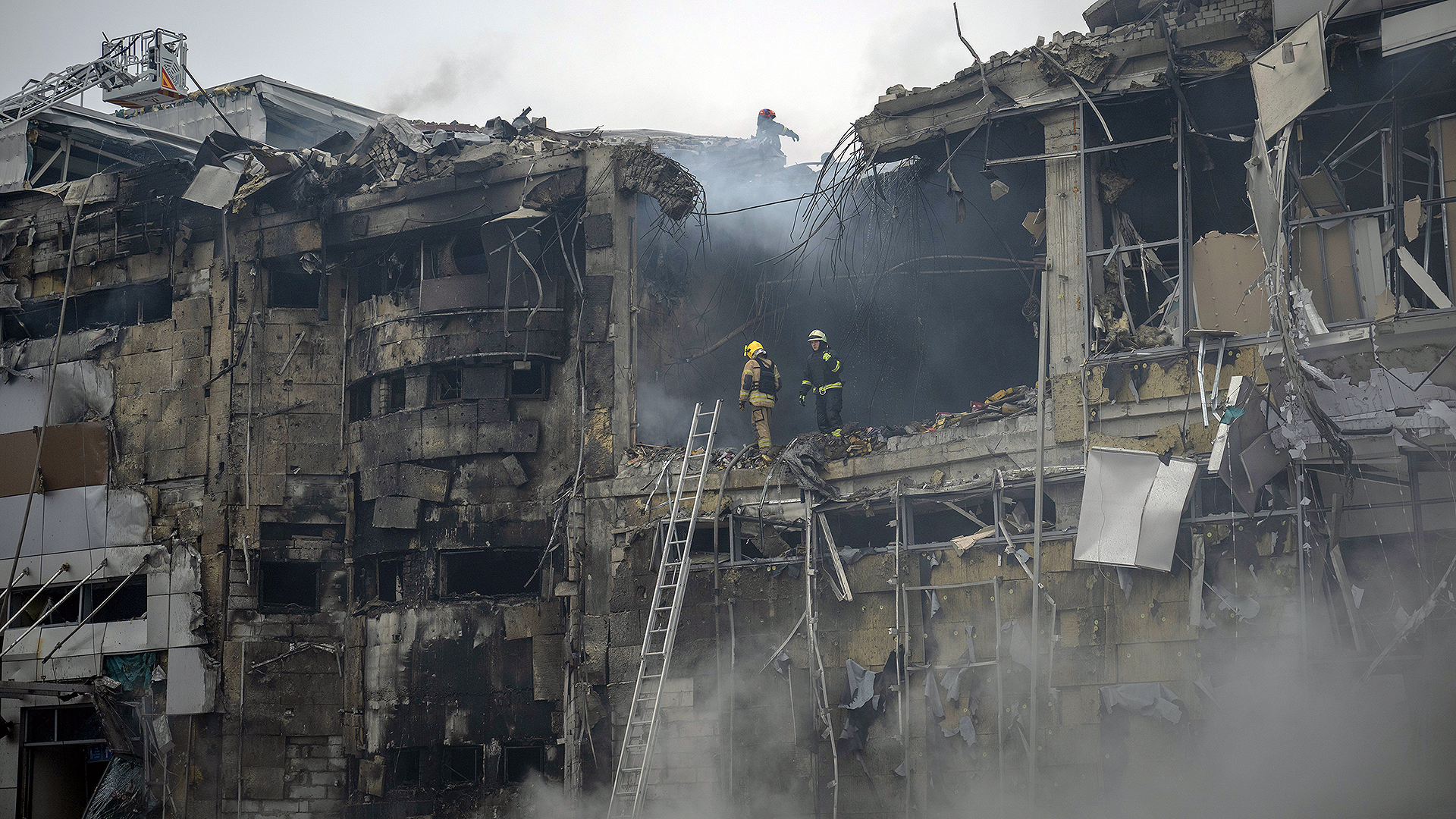Russia launched an apparently unprecedented wave of missile and drone strikes against Ukraine overnight. If the claims of Ukrainian authorities are correct, and 122 missiles were indeed launched, together with 36 one-way attack drones, this would be the biggest air raid of its kind since the start of the Kremlin’s full-scale invasion in February 2022.
Based on Ukrainian Air Force figures, previously the biggest assault was in November 2022 and involved 96 missiles launched against Ukraine. The heaviest attack this year was on March 9, involving 81 missiles.
According to Ukraine’s military chief Valerii Zaluzhnyi, air defenses shot down 87 of the incoming missiles and 27 of the drones, but the death toll from the strikes now stands at 27, according to the Associated Press.
Ukrainian officials meanwhile said that at least 144 people were injured and that many more likely remained buried under rubble.
According to Ukrainian Air Force spokesman Yurii Ihnat, Russia “apparently launched everything they have” against targets across Ukraine. Somewhat surprisingly, the raid didn’t appear to involve any ship- or submarine-launched Kalibr cruise missiles, with Russian long-range bombers bearing the brunt of the operation.
The Ukrainian Air Force says that a total of 18 Tu-95MS Bear-H bombers were involved, together with Tu-22M3 Backfire-C bombers that launched eight Kh-22/Kh-32 supersonic cruise missiles. Furthermore, five MiG-31K Foxhound fighters reportedly each launched a single Kinzhal air-launched ballistic missile.
During a roughly 18-hour bombardment that that began on Thursday evening and continued through the night, at least six Ukrainian cities were hit, including the capital Kyiv, Kharkiv in the northeast, Lviv in the west, Dnipro in the east, and Odesa in the south. Among the buildings reported to be damaged across Ukraine were apartment blocks, schools, and a maternity hospital.
Ukrainian President Volodymyr Zelensky posted on X saying that “Russian terror must and will lose.” He said:
“Unfortunately, there have been fatalities and injuries as a result of the strikes. All services are working around the clock and providing the necessary aid. My condolences to those who have lost their loved ones. I wish a speedy recovery to those injured.”
Condemnation of the attacks — and reiteration of support for Ukraine — has come from various leaders around the world. Among them is British Prime Minister Rishi Sunak, who said on X:
“These widespread attacks on Ukraine’s cities show Putin will stop at nothing to achieve his aim of eradicating freedom and democracy.”
Meanwhile, Bridget Brink, the U.S. ambassador to Ukraine shared a picture of her phone screen on X, showing several critical air raid alert messages. She also wrote:
“This is what Ukrainians see on their phones this morning: and as a result, millions of men, women, and children are in bomb shelters as Russia fires missiles across the country.”
Ukraine had long been preparing for a large-scale aerial offensive this winter, aimed at its cities as well as critical infrastructure. The country’s energy infrastructure was expected to be the main target, repeating Russian tactics from last winter, which left millions of Ukrainians without power.
Ukrainian officials said they expected to see considerable use of Iranian-designed Shahed-series one-way attack drones, as well as a return to Russia using air-launched cruise missiles, after a relatively long period in which they were rarely, if ever used.
It appeared that Moscow’s stockpile of cruise missiles was dwindling in recent months, with production capacity almost certainly failing to meet demands, and with sanctions making those issues even more pronounced.
However, the situation began to change earlier this month, with a renewed assault on Ukraine, using 19 long-range missiles, according to Ukrainian authorities.
It may well be the case that Russia has been stockpiling its cruise missiles for this latest, much larger assault.

With a Russian winter bombardment having been expected for months, Ukrainian officials have repeatedly called upon Western allies to provide additional air defense equipment.
Ukrainian presidential aide Andriy Yermak took to the Telegram messaging app today to make another call for such equipment:
“There are people killed by Russian missiles today that were launched at civilian facilities, civilian buildings. We are doing everything to strengthen our air shield. But the world needs to see that we need more support and strength to stop this terror.”
Since last winter, Ukraine has received new Western-made air defense systems, but nowhere near enough equipment of this kind to ensure coverage of every major city, let alone various energy targets. At the same time, there are growing signs of ‘war fatigue’ in the West that threaten the continued supply of heavy weapons, including air defense systems.
In recent months, Ukrainian officials have claimed positive results against the majority of the missiles launched by Russia, but there continues to be a great demand for air defense systems on the battlefield in the east and south of the country.
The situation on the front lines is likely another driver behind the massive Russian bombardment of Ukrainian cities, with both sides being largely bogged down in winter weather and the Ukrainian counteroffensive launched in the summer having made only negligible gains.

While it remains unclear if it was related to the overnight bombardment of Ukraine or not, Polish authorities announced today that an unknown airborne object entered their airspace from the direction of Ukraine before disappearing from radars.
On X, the Operational Command of the Polish Armed Forces said that the object entered from the Ukrainian side of the border and was observed by the country’s air defense system, penetrating around 24 miles into Polish airspace and disappearing after less than three minutes. It also said that air defense troops were mobilized to identify and find the object.
According to local authorities, the object crossed the border near the town of Hrubieszow in southeastern Poland. There were no immediate reports of any explosion or casualties.
Poland’s defense chief, General Wiesław Kukuła later said: “Everything indicates that a Russian missile intruded in Poland’s airspace. It was monitored by us on radars and left the airspace. We have confirmation of this on radars and from allies [in NATO].”
In November 2022, rogue missiles landed on a Polish farm and killed two people. Initially, it was assumed that Russian missiles had crossed into Poland, although subsequent reports indicated that the weapons were likely fired by Ukrainian air defenses during a Russian attack.
After the unprecedented overnight onslaught, the big question is whether Russia can maintain the magnitude of these strikes even for a short time, or if this was more of an anomaly. Regardless, the threat posed by Russian long-range missile and drone strikes just elevated to new heights.
Contact the author: thomas@thedrive.com
